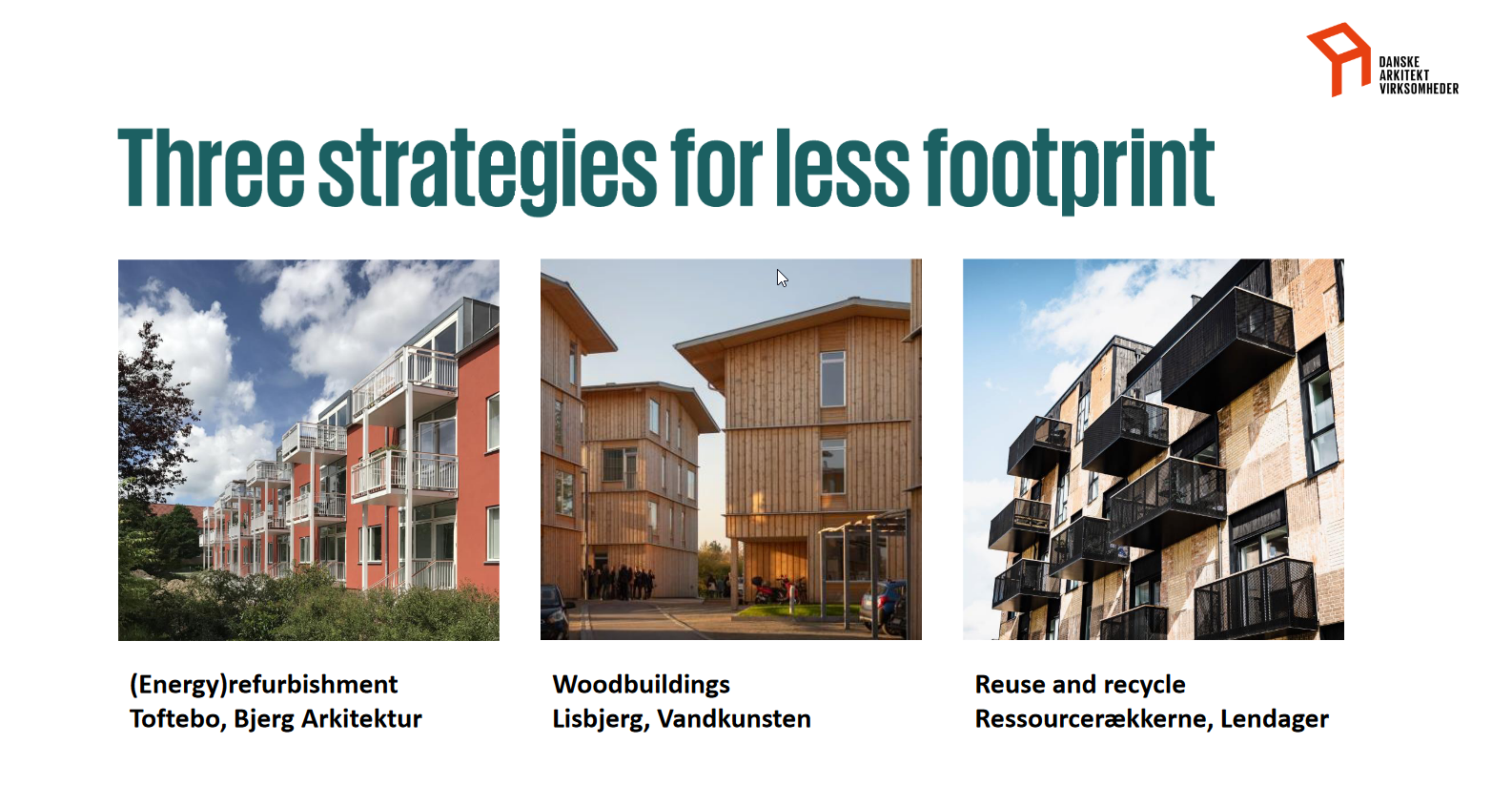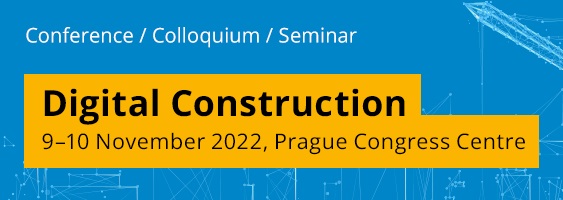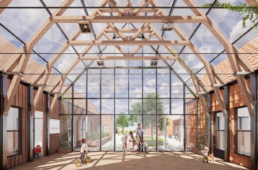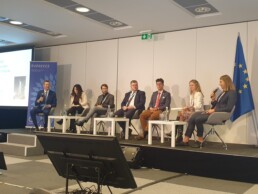How are climate change, the construction industry and BIM connected?
It is common knowledge now that the construction industry is one of the major culprits of the ecological footprint. The cement industry alone is in third place for the production of CO2 after the countries of China and the USA. Time is running out, and all designers in the sector need to begin to work collaboratively to the transition towards more sustainable paths.
However, designing zero energy buildings is not enough. We must also reduce the use of materials that pollute excessively and the overly exploitation of natural resources. We need to put in place plans for reusing and recycling, and the materials to recycle should come also from waste, and not only from the demolition of buildings.

In Copenhagen, during the conference organized on December 7th by KEA (Copenhagen School of Design & Technology), it was underlined the importance of architects and engineers considering the use of appropriate materials already in the preliminary design phase. Also important is limiting the use of reinforced concrete to those buildings and structures that really need it and, wherever possible, considering alternative solutions that can be even more performing. It is also necessary to reuse the material resulting from demolitions in a smart way.
In France and Denmark, in application of the European recommendations for the reduction of the ecological footprint, the law requires the declaration of the total of CO2 produced. Not only as LCA, i.e. a simple certification of how much CO2 that particular building produces, but it is also required to justify the choice on the materials, which must produce less CO2 than alternative solutions.
During the debate following the conference it was rightly pointed out that "virgin" materials often have a lower cost than the recycled ones because the production process from raw materials is simpler than the recycling of existing materials, especially if their composition is unknown. Soon however, to encourage recycling, in Denmark it will be introduced a tax on the production of CO2, which will make the price of the two choices comparable and will possibly make recycled materials more advantageous.
In Denmark, they initiated pilot cases in which, for example, it was approved the project of a nursery school in place of an old abandoned school, provided that the materials derive from the demolition of the old structure. In place of the old school there are now two soccer fields and a nursery school built sustainably and on a zero impact criteria. This thanks to the saving of "virgin" material which normally requires a large energy contribution, both in production and for transportation. Furthermore, wood has once again become the first choice, both for new houses and for renovations.
The role and contribution of BIM in all of this was also discussed. A software was shown that BIM allows to evaluate the CO2 footprint, just as there are already 4D and 5D software that allow to evaluate times and costs. Each product is connected with its ecological footprint, i.e. with the carbon dioxide produced for its production. In this way, it is possible for the designer to attribute a real value to the ecological footprint of the entire building.
It is clear that the role of material producers is becoming more and more Impactful. They must transition from providing the values that certify the "ecological footprint" in simple pdfs, to the transmission of data that can be directly read by design software. To allow this, the bSDD is already available, i.e. a service that buildingSMART International makes available to "translate" any property and geometry into data that can be read by modeling software.
Essentially, it is enough to connect these properties and values to each element. As an example, the "wall" properties can be linked to reinforced concrete, solid bricks, hollow bricks, laminated wood, recycled panels and so on to which the manufacturer will have to associate the corresponding "CO2/metre" properties. The software, at that point, can directly calculate the final footprint.

By changing the material, in a few clicks, the final value can automatically be updated. This will facilitate the final selection.
However, there is still a long way to go. For example, we need to work on new legislative instruments that support this approach. In public tenders, it will be necessary that the ecological footprint has a weight in the selection, so that designers are encouraged to make more ecological choices. It will also be important to help small producers of recycled materials to certify their products with the CE mark in order to be able to place them in the market. It will also be necessary to properly train manufacturers and the workforce to use these new products correctly. Finally, it will be necessary to support research in this sector.

These topics will also be addressed during the next buildingSMART International Summit, which will be held in Rome from 27 to 30 March 2023.
All the European chapters of buildingSMART will also meet, on this occasion, with the European Commission (DG Growth) to look for agreements to ensure that part of the substantial funding foreseen for the construction sector will be directed to these activities. We invite you to participate numerous at the Summit, that is open to all interested parties in the sector, members and non-members of buildingSMART.
Presentation and images by Lene Espersen
Article by Anna Moreno and Caterina Nissim
Digital Construction Conference 2022 – Towards Construction 4.0 and the future of this sector in the digital era

On November 9th and 10th, the president of IBIMI-buildingSMART Prague participated in the "Digital Construction conference” organized by the Czech Ministry of Industry and Trade in Prague, in collaboration with buildingSMART Czech Republic, with the goal to outline the possible development paths of the sector towards Construction 4.0 .
Many representatives of buildingSMART International and of the individual national chapters attended the conference, confirming the importance of the role played by our community in the digital transformation of the building supply chain.
The construction industry is still the least digitized sector of all and, at the same time, one of the largest contributors to GDP in all European countries. Add to this the stagnant levels of labor productivity and the urgency of undertaking profound changes becomes evident.
The main purpose of this meeting was to find new solutions to stimulate the flow of data in the sector and accelerate construction processes through Building Information Modeling (BIM) and improve the technological and data ecosystem of the construction industry.
No less important, the other topics discussed included the introduction of digital transition and BIM in the public sector, the revolution in the acceleration of building permit processing, robotization, automation and prefabrication in the construction ecosystem.



The good news is that much-needed change is already underway. After decades of under-digitalization, the construction sector seems ready to start a new era. New analyzes of the construction technology ecosystem uncover emerging trends, solutions, and a growing universe of technology use cases that are revolutionizing the way we plan, design, and execute construction projects.
The development of robotics and 3D printers will be solutions not only to the lack of workforce in the construction industry but also to problems related to the safety of workers. For instance, for the reconstruction interventions in risk areas, a "hot" topic also supported by the CECE (Committee for European Construction Equipment https://cece.eu/) in relation to the recent events in Ukraine.
The discussion with Katharina Knapton-Vierlich, the new representative of DG Growth H1 construction, on "digital transition and BIM in the public sector", was very interesting. The goal is to identify a common digital development strategy between the Member States and the European Commission, which would support it with specific funding programmes. Topic of extreme relevance for buildingSMART. For this reason, the dialogue started in Prague will be deepened with the Commission during the buildingSMART summit to be held in Rome next March.

Extremely interesting was also the European Commission initiative on the Digital Building Logbook, with the goal of promoting transparency and greater availability of data for a wide range of market operators (property owners, tenants, investors, financial institutions and public administrations). The idea is to provide a guideline that catalogs and stores all the information deemed important for a Digital Building File in a format that synchronizes the methodologies used in the various member countries, also through R&I projects for the implementation of the Digital Register financed by the Commission.
At the end, it was also discussed the impact of this transformation on human resources, focusing in particular on training. The digitization of the supply chain must not be perceived as a threat by workers in the sector, but recognized as a way to improve the image and the working conditions in the industry. The right training courses and the right skills will in fact make the sector more attractive to younger workers. And it is precisely in this direction that buildingSMART International is going with the work at the tables of the Professional Certification Program (PCERT), the professional qualification program designed to provide a certificate compliant with local regulations and at the same time having international validity on skills in the BIM and openBIM.
Many of the points raised during the conference in Prague will be the subject of further debate and study at the buildingSMART International Standards Summit in Rome. We invite you therefore to continue following us and to join us on the occasion of the Summit.
SAVE THE DATE: buildingSMART International Standards Summit - Auditorium della Tecnica, Rome – 27/30 March 2023
Giulia Riccardi
Anna Moreno
Caterina Nissim

